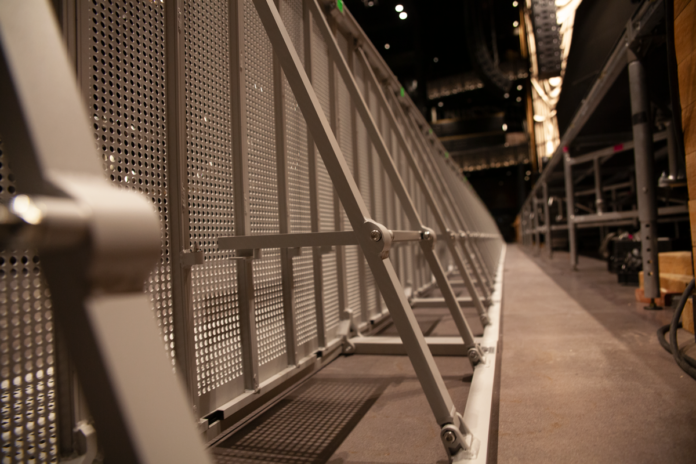50 Years of Tragic Lessons in Event Crowd Control
In 1969, the Rolling Stones organized a free concert at Altamont Speedway, CA. Billed as “Woodstock West,” the event attracted 300,000 people to a hastily prepared venue where fans stormed the stage and violence erupted. Poor organization, insufficient facilities and a lack of trained security personnel contributed to the mayhem.
In the 50 years since Altamont, fan violence has continued to shake cities around the world. Learning from each tragedy, venue operators and local officials continually improve crowd management and perimeter security strategies for major events. To help with these efforts, event staff also rely on cutting-edge safety and security equipment from industry experts like SONCO.
Recognizing Fan Aggression Triggers
To effectively prevent fan violence at concerts, event organizers should consider all factors at play when concert-goers gather. Here are some key culprits driving aggressive behavior and violence at shows:
- Substance overuse. Those anticipating an immersive experience may arrive at show venues already altered by alcohol and drugs—and the imbibing often continues throughout the event.
- Lowered inhibitions. In a widely-referenced 2013 poll by MSN News, nearly half of music festival attendees said concert environments had caused them to behave in ways they’d “never consider” otherwise. Reported actions included sleeping with a stranger (25%), taking drugs (21%) and getting into a physical altercation (21%).
- Complex event logistics. Controlling concert crowds becomes even more problematic when drugs and reckless behavior meet slow-moving queues, seating mix-ups, concert delays and disappointing performances. As fan frustration grows, it often feeds aggression and leads to violence.
- Intense concert environments. Overcrowded spaces, low light conditions, high indoor temperatures and heightened noise contribute to event confrontations between attendees, performers and security personnel. Effective concert crowd control starts with minimizing or diffusing these triggers whenever possible.
Eight Key Steps to Concert Crowd Control
- Devise detailed emergency procedures. Take a proactive stance to concert security by working with stakeholders to develop risk management plans. Plans include establishing a strong police presence at your event and preparing to handle restless or combative fans during concert delays. Some of the worst instances of concert violence occur when musicians fail to appear or leave during a performance.
- Maintain distance between the stage and audience seating. Set up an open area (15’ to 30’ deep) between fans and performers. The goal is to protect both groups from surging crowds and projectiles. Concert barricades also help manage crowds and prevent or control risky fan behaviors—like moshing, stage diving or crowd surfing.
- Avoid general admission and festival seating. Single-line ticket entry enables staff to screen for prohibited items, regulate pedestrian traffic and prevent overcrowding and confrontation. Ushers can quickly direct attendees to designated seats and control crowd surges common with open seating.
- Highlight and illuminate entryways, exits, aisles and first-aid stations. Easy-read signage and open traffic flows to restrooms and vendor booths keep confusion and mishaps to a minimum.
- Block spectator access to backstage and performance areas, green rooms and lighting or facility control rooms. SONCO’s state-of-the-art stage barricades, gate-hinged barriers, reinforced steel barricades and temporary fence setups allow crew entry while prohibiting unauthorized access to critical areas.
- Use remote cameras and aerial observation to identify blocked aisles, fan conflicts and other potential problems.
- Hire and train sufficient security personnel to monitor crowd behavior, diffuse tense situations and remove disruptive patrons. If your music event sells out, boost the number of security personnel by 15 to 30 percent. Train staff thoroughly in emergency evacuation procedures and assign a clear-cut chain of command to prevent fan violence.
- Employ crowd control measures to secure the venue perimeter and direct concert-goers throughout the facility. SONCO perimeter fencing and barriers limit entry and help prevent tragedies like the fan stampede at the Who’s sold-out 1979 Cincinnati concert, where 11 waiting attendees died.
Secure Your Next Concert With Dual-Duty Fencing
Perimeter fencing does double-duty when paired with custom-printed fence screens, banners and concert barricade covers. SONCO’s in-house designers transfer print-ready images to sign templates or create high-impact graphics to promote your upcoming event or advertise for sponsors. Fence covers and barrier jackets are a proven way to screen out curious onlookers, monetize your events and advertise for upcoming shows.
Connect with SONCO Perimeter Security for online shopping that’s safe, accurate and affordable. We guarantee it!
Make your next concert, festival or event safe and successful. Request an online product quote or call 866.202.6753 to speak with a customer service representative.




